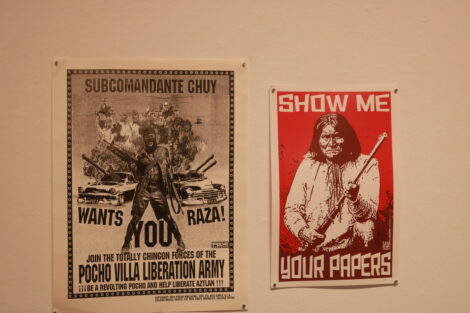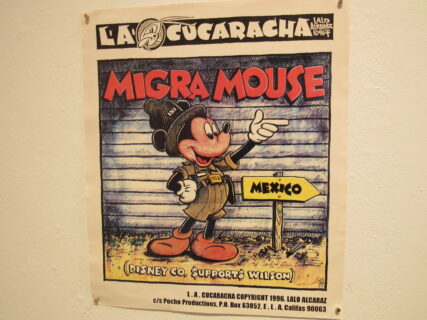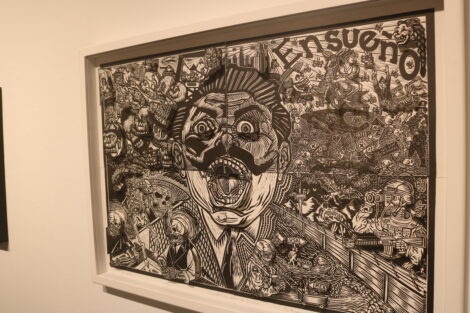By Robert Rios
Staff reporter
For centuries, artists have wielded satire, irony and wit as weapons expressing their ideas and feelings concerning serious social issues. One of the modern masters of that was Jose Guadalupe Posada, a Mexican-born, prolific illustrator who lived from 1852-1913 and whose work was a backdrop to the Mexican Revolution and future inspiration to countless other artists, from those of the Chicano movements in the 1970s to contemporary Latinx creators.

The CSUDH University Art Gallery held an opening reception Oct. 5 to honor Posada’s chronicling of society, as well as his inspiring future artists. “Legend and Legacy: José Guadalupe Posada and Contemporary Latinx Art,” includes pieces by Posada as well as contemporary artists such as Lalo Alcaraz, Olivia Y. Armas, Kallie Arte (Adriana Carranza and Alfonso Aceves), and Alvaro Márquez.
The event is open to the public and runs through Dec. 13.
One of the reasons for the exhibit is to illustrate the illustrator. Much of Posada’s artwork, is instantly recognizable to many, such as la Calevera Catrina, a zinc etching created around 1910 featuring a female skeleton wearing an elegant hat. That piece, like so much of Posada’s oeuvre, had a deeper point: he was satirizing the trend among Mexican aristocrats in

La Calevera Cantina, created in 1910 by Posada, has become one of the most iconic images of Dia
But though the piece’s satire may not be remembered 110 years later, is has become the most iconic image surrounding
“We really wanted to share the work with our students and larger community here with Posada’s work being so familiar with everybody, but I think a lot of people don’t know who he was or the kind of work he did,” said Roderick Hernandez, associate professor of English and co-curator. “That’s why we want to do this, to show that artists have been and continue to use the iconography to make satirical commentary about immigration or even the commercialization of the Day of the Dead. I don’t think people in the 70’s had any idea that this would be as popular as it has come.”
Posada was born in Aguascalientes, Mexico in 1852 and passed away in 1913. His first days of creating political cartoons got his newspaper, El Jicote (The Bumblebee), shut down 11 issues into his tenure due to his offending a local politician. Most of Posada’s illustrations challenged political leaders, playing a crucial role for the government during the presidency of Francisco I Madero and the campaign for Emiliano Zapata during the Mexican Revolution. Posada worked tirelessly in the press until the day of his passing, with some calling him a revolutionary and champion of the people for wanting his art to spur social change.

The gallery is scattered with print art from Posada and other contemporary artists who emulate his themes of socio-political awareness and commentary into their work with skeletons. However, this is not a Day of the Dead show.
Many of the art pieces parody American icons such as Mickey Mouse, Superman, and the “Peanuts” gang created by Charles M. Schulz. Characters like those are either given a Latinx redesign or portrayed in a manner to prove a point politically or humorously.

Whether the pieces in this exhibit are designed to satirize, deliver a message, or merely comment on pop culture, all bring different experiences and perspectives of “Chicanismo,” said Alvaro Márquez, artist and Cal State Long Beach student.
“It helps show what it means to be a person of color at this time, [the exhibit approaches that] through different lenses, but ultimately it’s critical and satirical,” Márquez said. “The become a motif that have [been used[ historically as a form of political critique so you can see the different takes on how that idea is used.”
.
The exhibit runs Monday–Thursday, from 10 a.m. to 4 p.m. The gallery is free and open to the public, but appointments can be made by contacting the university art gallery via email at [email protected].

